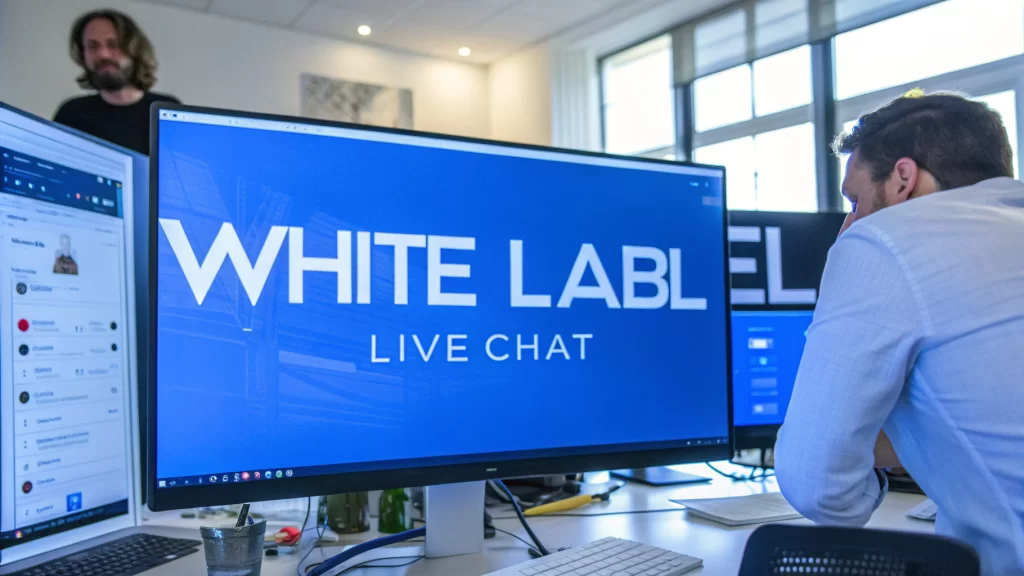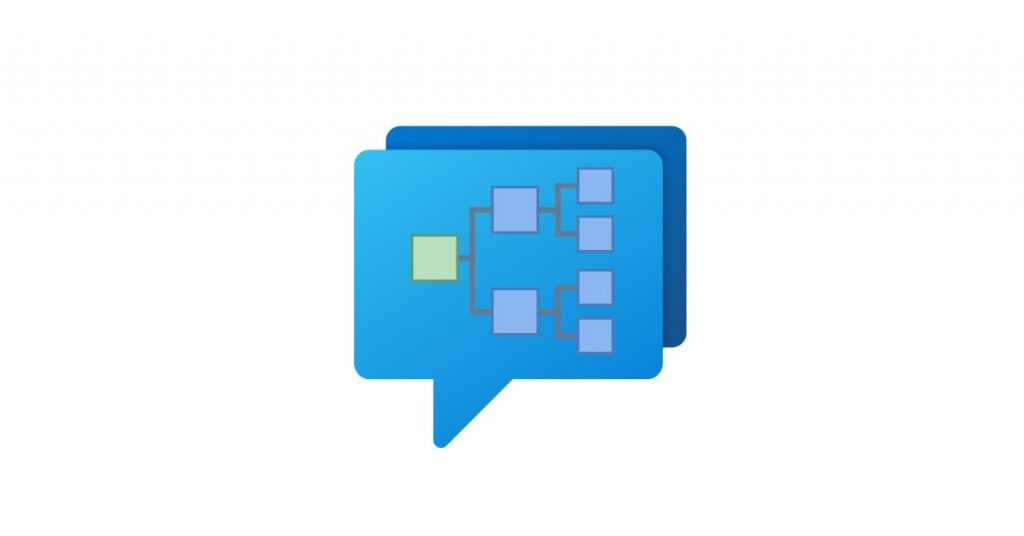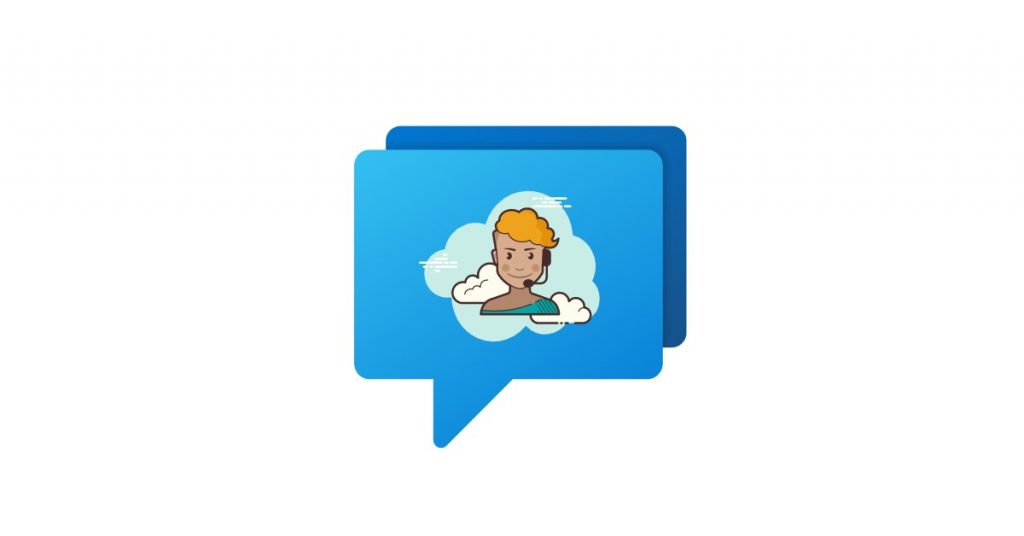If you're running a digital agency in 2025, you've probably noticed something: your clients are asking for live chat. Not next quarter, not eventually. Now.
And they're right to ask. Research shows that over 41% of customers now expect a live chat widget on business websites, and 81% of customer service teams plan to increase their live chat investment this year alone.
For agencies, this creates an opportunity that's frankly too good to ignore. You can resell a proven live chat solution under your own brand, delivering instant customer engagement for clients without building anything from scratch.
The result? Happier clients, new recurring revenue, and a much stronger competitive edge.
In this guide, we'll show you exactly how white-label live chat works, why it's booming right now, and how your agency can capitalize on it. Whether you're a marketing firm, web designer, or IT consultant, you'll know exactly how to launch (or improve) a white-label live chat offering that actually moves the needle.
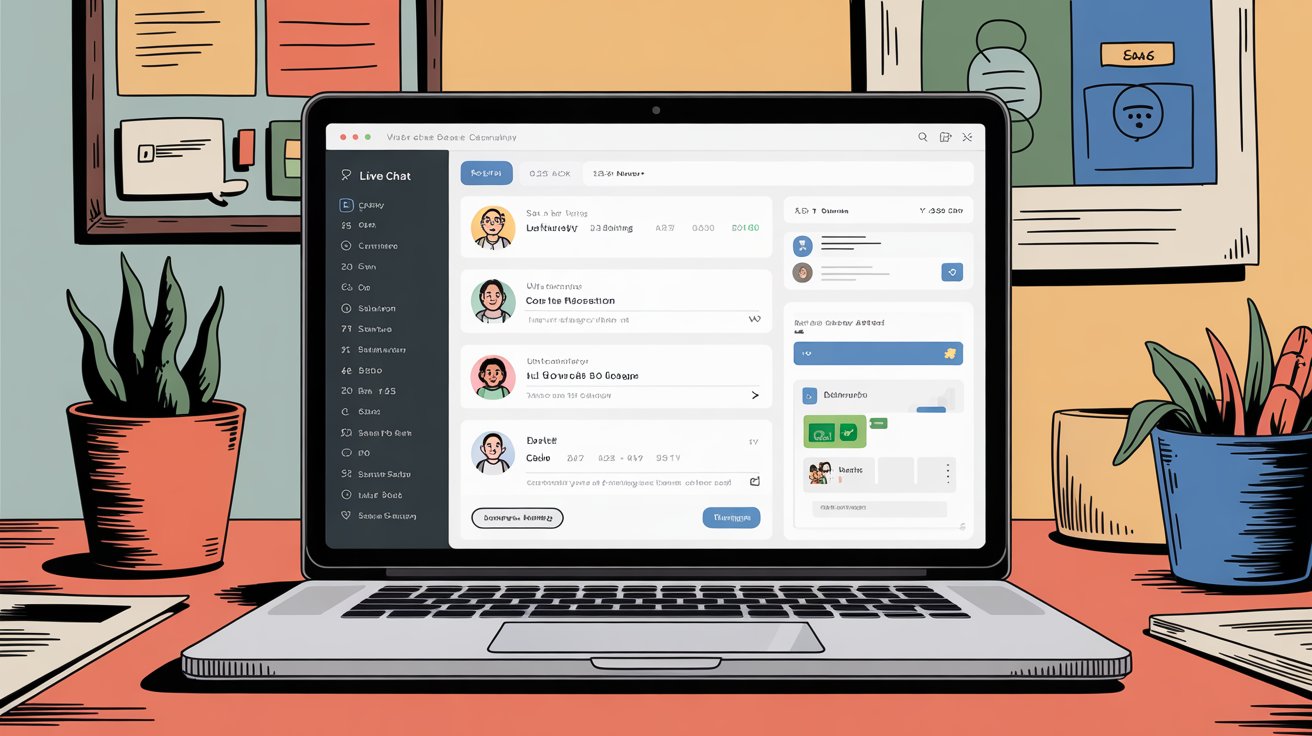
What Is White-Label Live Chat?
White-label live chat is a fully developed chat platform that you can completely rebrand as your own.
Think of it like this: a third-party provider powers everything under the hood, but neither your clients nor their website visitors see that vendor's name. You get a production-ready chat system with an "empty label" where you slap your logo and branding on top.
The chat widget, dashboards, and login portals can all match your agency's look. As Social Intents puts it: "you resell our service but it looks like your platform to your customers." Visitors see a chat box that blends into the client's site. Your client sees an admin panel branded with your agency name.
All the infrastructure, updates, and maintenance? Handled by the provider in the background.
The core idea: offer the capabilities of a dedicated chat solution without building or maintaining one yourself.
Why Agencies Are Adding White-Label Live Chat in 2025
Agencies across every niche are flocking to white-label live chat programs. Here's why 2025 is the perfect time to make this move:
Clients Demand Live Chat Now More Than Ever
Live chat has shifted from nice-to-have to must-have. Industry research shows consumers prefer live chat for support more than any other channel, with 41% choosing chat first (beating both phone and email).
They're also 60% more likely to return to a website if it offers live chat.
Your clients know this. They're either asking for chat solutions now or they will be soon. By offering a ready-made service, you meet an urgent need and keep clients from shopping elsewhere.
How to Create a New Recurring Revenue Stream
White-label chat lets you resell a service at a profit. Instead of referring clients to a third-party tool (and earning nothing), you provide the solution and charge for it as monthly recurring revenue.
One agency-focused provider notes that over 70% of their business comes via white-label partners. That's how popular this revenue model has become.
Done right, you recoup costs with just a few client sign-ups and then enjoy high-margin income from additional accounts.
Why White-Label Chat Makes Client Relationships Stronger
By managing your clients' live chat, you become deeply integrated into their business operations.
Live chat converts the very traffic your marketing or web design efforts bring in, delivering tangible ROI. Industry experts note that offering live chat lets agencies prove their worth by delivering qualified leads and improved conversions, which dramatically boosts client retention.
Rather than being just the SEO or site-build vendor, you're now powering a mission-critical customer service channel. That extra value makes it much harder for clients to leave.
Avoid Expensive Development With White-Label Solutions
Building a reliable, feature-rich chat platform from scratch is incredibly costly and time-consuming.
Estimates suggest even a basic chat app could take 3–6 Months of development and $30K–$65k in cost. A more advanced solution could exceed 9 Months and $250K.
White-label solutions save you all that effort and expense. You can start offering chat in a day rather than a year. In 2025's fast-moving landscape, that speed to market is absolutely crucial.

AI Chatbot Capabilities Included With White-Label Platforms
This year has seen an explosion in AI chatbot capabilities. Modern white-label chat platforms often include AI integrations (like one-click ChatGPT-powered bots) that agencies can leverage for clients.
This means you can offer not just live human chat, but also automated 24/7 chatbots under your brand. We'll cover this more later, but it's a huge competitive advantage in 2025.

White-Label Live Chat Benefits for Agencies
Let's break down the specific benefits you gain by white-labeling a live chat solution:
Launch Live Chat in Days, Not Months
You can be up and running almost immediately. Instead of developing features like chat widgets, routing, and analytics from scratch, you configure an existing platform.
Many white-label programs allow you to deploy your branded chat for a client within minutes. This speed means you can start selling the service (and generating revenue) right away.
Save $30,000+ Compared to Building Your Own
All the R&D, infrastructure, and maintenance are handled by the provider, amortized across their customer base. As a reseller, you avoid heavy upfront investment.
Rather than hiring developers and paying cloud hosting, you typically pay a subscription fee that's a fraction of what building your own would cost. Estimates show using white-label chat can save Well over $30,000 compared to custom development.
Maximize Profit Margins With White-Label Pricing
You purchase the chat solution wholesale (or via a bulk plan) and resell at a markup. Since software has low marginal cost, the profit margins can be very healthy.
Agencies add an ongoing revenue stream without a lot of overhead. You can also bundle live chat with your other services (web design, digital ads, etc.) to increase your package price.
This diversified income makes your agency more resilient.

Deliver More Value to Clients
Offering live chat makes your service catalog more comprehensive. You become a one-stop shop for your clients' digital needs.
Clients get better results (more leads captured, higher customer satisfaction) from their websites and campaigns thanks to live chat. That success reflects on you, leading to stronger trust and longer engagements.
Complete Branding and Customization Options
White-label means the solution feels like it's yours. You can customize the chat widget's look to fit each client's website (matching colors, avatar, etc.) and Remove any vendor logos or links.
Many platforms give you an agency dashboard under your brand name, often on a custom domain. For instance, you might have clients log in at support.youragency.com to view their chats.
A completely branded experience reinforces your agency's professionalism.
Integrate Live Chat With Your Existing Tools
The best white-label chat solutions play nicely with other tools. As an agency, you likely have preferred CRMs, marketing platforms, or team collaboration apps.
Look for chat platforms that integrate with these tools (or have APIs) so you can connect transcripts, leads, and data seamlessly. Some even allow agents to reply via Slack or Microsoft Teams instead of a separate app, streamlining operations.
Track ROI and Prove Value to Clients
Most chat platforms include dashboards showing chats handled, leads generated, response times, customer satisfaction, and more. As an agency, these reports are invaluable.
They let you demonstrate clear ROI to your clients. For example, you can show a client that 50 new leads came through chat in a month, or that customer issue resolution time dropped by 40%.
Hard numbers like these justify your fees and help secure contract renewals.
Scale Support With AI Automation
In 2025, nearly all top chat platforms incorporate AI chatbots or automation features. This means you can set up FAQ bots or lead-qualification bots for clients without writing code.
They work 24/7, handling common questions instantly. This is a huge selling point for clients with limited support staff or off-hours traffic. When the bot can't help, it smoothly hands off to a human agent.
By white-labeling a chat platform, you essentially get to offer cutting-edge AI capabilities under your brand, which would be impossible to build alone.
2025 Trends: AI Chatbots and Multi-Channel Chat
It's worth highlighting two big trends in 2025 that any agency offering white-label chat should know about:
Why AI Chatbots Are Now Standard in Live Chat
The integration of AI into live chat has amplified the capabilities of live chat solutions in recent years. Customers have grown accustomed to instant, intelligent answers, thanks in part to the rise of ChatGPT and similar technologies.
Modern white-label platforms often include AI chatbot builders or integrations. As an agency, this means you can offer your clients AI chatbots from day one.
For example, Social Intents allows one-click training of a ChatGPT-powered bot on the client's website content. Other platforms might integrate with Claude AI or Google Gemini.
In 2025, clients will expect chatbots alongside live chat for cost-effective 24/7 coverage. Make sure to choose a provider that delivers AI under your branding, ideally one that lets you easily train or customize the bot for each client's knowledge base.
How to Manage Conversations Across All Channels
Live chat is no longer confined to a website popup. Many businesses want to manage conversations across web, mobile app, and social messaging channels in one place.
Some top solutions unify chats from web, WhatsApp, SMS, and Facebook Messenger into one dashboard. Others integrate with popular team chat apps, routing website chats into a Slack or Microsoft Teams channel for easy answering.
In 2025, having that omnichannel capability can set your agency apart. It means your clients won't need separate tools for live chat vs. social media messaging, which is a big convenience.
What Agencies Need to Know About Security Compliance
With growing privacy regulations and security awareness, clients (especially enterprise or healthcare/government) may ask about data control.
It's more important than ever in 2025 to ensure the white-label chat software is secure. Think encryption, GDPR compliance, and maybe even on-premise options if needed. Some enterprise-focused solutions offer deployment either in the cloud or on-prem for full data control.
As an agency, you should be prepared to address these questions. Choosing a reputable chat provider with clear security measures (SSL, data encryption at rest, etc.) and compliance certifications will make those conversations much easier.
What to Look For in a White-Label Chat Solution
Not all chat software is created equal. When selecting a platform to white-label, agencies should carefully evaluate several key features and factors:
Complete Branding Removal and Customization
This is the whole point of white-labeling. Ensure the platform lets you remove their branding entirely (from the chat widget with no "Powered by ___" text, to email notifications and dashboards).
You should be able to add your or your client's logo and colors. Some solutions only offer white-label on higher tiers. Verify what level of brand control you'll have.
Ideally, you want features like a custom domain for the client login portal and custom email sender addresses, so everything looks unified under your brand.
How to Manage Multiple Client Accounts Efficiently
As an agency, you'll be handling multiple client accounts. Look for a provider that offers an agency dashboard or multi-tenant capability.
This typically means you have a master account and can create sub-accounts for each client, each with separate data and settings. For example, Social Intents' agency plan includes an admin panel listing all your client sub-accounts in one place.
You can jump into any account to configure their chat or view usage.
This central hub is crucial for efficiency. Also consider how many sub-accounts are included in the pricing. Some plans might cap the number of clients or charge extra as you grow.
Essential Live Chat Features You Need
Naturally, the platform must deliver on the basics of live chat. This includes:
• A website chat widget that's easy to embed, responsive on mobile, and customizable in appearance
• Support for features like agent transfer, file sharing, offline forms (so visitors can leave a message when agents are offline)
• Chat transcripts/email follow-ups, and possibly real-time typing indicators and read receipts which enhance the chat experience
• Multiple concurrent chats per agent, which is important for efficient support
• If your clients operate in different languages, multi-lingual support or auto-translation is a nice bonus
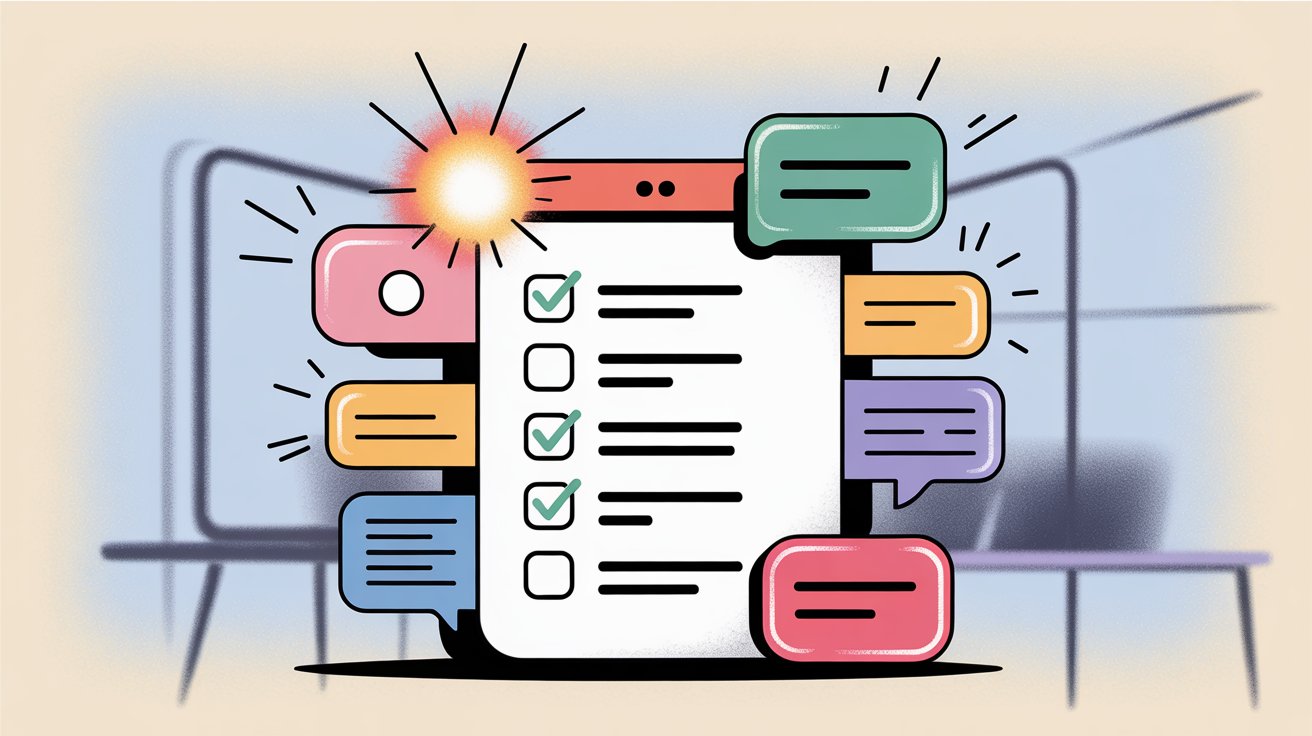
AI Chatbot Integration Requirements
As discussed, AI chatbots are a must-have in 2025. Evaluate what the platform offers here.
Some have built-in chatbot creators or AI agents you can configure with no coding. Others might integrate with third-party chatbot platforms via API or offer a marketplace of bot templates.
You'll want the ability to deploy a chatbot that can answer common questions or pre-qualify leads, with an easy option for handing off to a human. Also consider if the AI can be trained on custom data (like ingesting your client's FAQ pages or documents).
Multi-Channel Messaging Capabilities
If you aim to offer a comprehensive chat solution, choose a platform that goes beyond just website chat.
This could mean the ability to manage Facebook Messenger, WhatsApp, or SMS conversations in the same interface. It could also mean integrations with live chat in mobile apps or through third-party messaging apps (like offering a Slack or Teams integration so clients' teams can answer from those apps).
Not every agency will need this, but it's wise to anticipate client needs. A realtor might want SMS chat, an international client might prioritize WhatsApp. Having those options extends your service versatility.
CRM and Business Tool Integrations
Think about the ecosystem. Good live chat software will provide Integrations or APIs to connect with other business tools.
Common ones include:
→ CRM systems (Salesforce, HubSpot, Dynamics 365)
→ Email marketing platforms (Mailchimp, Constant Contact)
→ E-commerce platforms (Shopify, WooCommerce, BigCommerce)
→ Helpdesk/ticketing software (Zendesk)
Integration with Zapier or Make.com is super useful as it opens the door to thousands of apps. These integrations let you automatically push chat leads into a CRM, create support tickets from chats, or even trigger marketing campaigns.
Analytics and Reporting Dashboards
As an agency, you'll need to monitor usage and success across all clients. The platform should have a reporting dashboard with metrics like:
① Number of chats
② Response times
③ Customer satisfaction (if rated)
④ Conversion rates from chat
⑤ Busiest hours
Some solutions provide agent-level stats and leaderboards, which can be useful if you manage the support teams. Also consider if data can be exported or scheduled as reports. You might want to include chat stats in your monthly client reports.
Advanced analytics like sentiment analysis or keyword trends are nice to have but not essential. The main thing is visibility into performance so you can optimize and prove value to clients.
Performance and Security Requirements
Don't overlook the backend fundamentals. The chat software should be fast, reliable, and secure.
Look for uptime guarantees or at least a strong track record. A slow or frequently down chat service will reflect poorly on you.
Also confirm data security measures:
• Is data encrypted in transit (almost always yes via HTTPS) and at rest?
• Where are servers located (especially important if clients are in regulated industries)?
• If any of your clients might ask about HIPAA or GDPR compliance, have answers ready
For example, enterprise-focused solutions like Comm100 offer options for on-premise deployment for clients that require it. Even if you don't need that now, knowing the platform is built with security in mind is crucial.
How to Evaluate White-Label Pricing Models
Last but certainly not least, examine the pricing model in detail. Since you'll be reselling, the pricing needs to make business sense.
Different providers structure agency pricing differently:
|
Pricing Model |
How It Works |
Best For |
|---|---|---|
|
Flat monthly fee |
Fixed $X per month for set number of sub-accounts or chat seats (e.g., up to 10 clients) |
Predictable costs and higher margins as you add clients |
|
Per client account |
Fee for each client you add, or discount off retail price that you mark up |
Agencies starting small who want pay-as-you-grow flexibility |
|
Conversation volume or agent seats |
Costs scale with chat usage or number of agents |
High-volume agencies with varying client needs |
Do the math on what your cost per client will be and how much you can charge. The goal is a healthy profit margin while still giving the client a fair price.
Also be mindful of scaling: if you double your client count, how does your cost increase? Avoid anything that doesn't scale smoothly or that could suddenly bite your margins.
Vendor Support and Partner Resources
As a reseller, you'll want solid support from the software vendor. Check if they provide a dedicated account manager or priority support for partners.
When something breaks or you need a hand onboarding a big client, you'll be glad to have responsive support (that you can contact, not the client reaching out to the vendor directly).
Also see if they offer any training materials or sales collateral for resellers. Some will have white-label brochures, slide decks, or tutorial videos you can use with your clients.
Best White-Label Live Chat Platforms for Agencies in 2025
There are dozens of chat software providers out there, but only a subset offer true white-label or reseller programs suitable for agencies.
Social Intents: Live Chat + AI Chatbots With Agency Portal
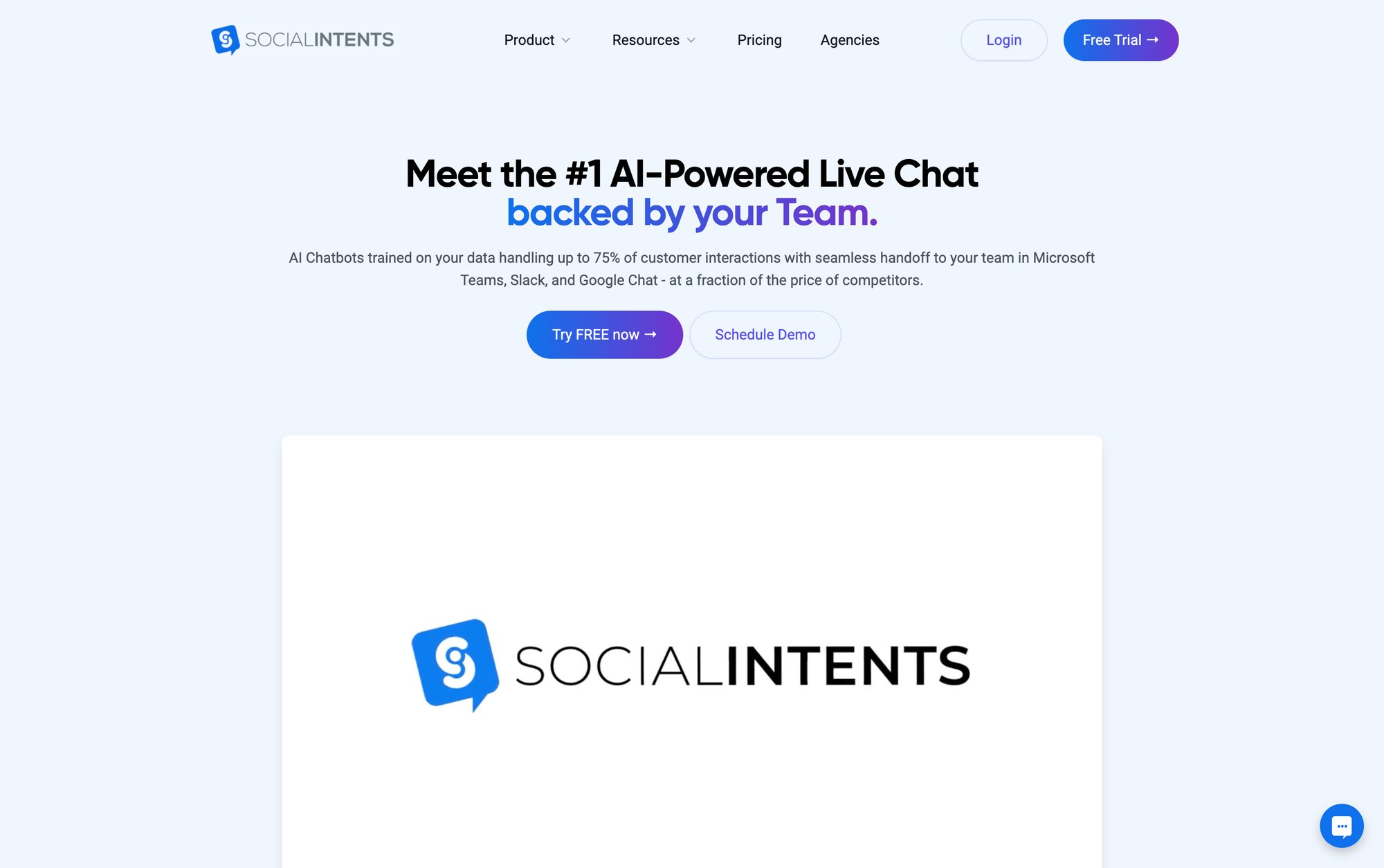
Social Intents is a live chat and AI chatbot platform known for its unique ability to let agents answer chats from Microsoft Teams, Slack, Google Chat, Zoom, or Webex (or from a web dashboard if they prefer).
For agencies, Social Intents offers a dedicated Agency/Reseller plan that makes it easy to manage multiple client accounts under one roof.
Key Features:
• Website chat widget with extensive customization
• Integration with collaboration tools (great if a client's support team lives in Slack or Teams)
• Unlimited agents on most plans (no per-seat fees)
• Built-in AI chatbots using ChatGPT, Claude, or Google Gemini, which you can train on client FAQs or websites with one click
• Proactive chat triggers and pop-up offers
• Real-time visitor monitoring
• Canned responses and agent commands for productivity
• Options like SMS, WhatsApp, and Facebook Messenger integration for omnichannel support
White-Label Highlights:
Social Intents' Pro and Business plans allow removing co-branding (so the chat widget doesn't show their name), while the Agency plan goes further with Complete white-labeling. Your own portal, custom domain, and you bill your clients directly.
The agency package includes support for 10 Client accounts and 10 chatbots for a flat monthly fee, and you can scale up beyond that at a nominal per-client cost. This flat pricing means you can profit after just a few resold accounts.
The client dashboard is straightforward, and you have master control to jump into any account to assist with setup or view stats.
Why Agencies Love It:
Social Intents is particularly attractive to agencies whose clients use Microsoft 365 or Slack, since it's the only solution that natively pipes chats into those tools.
There's no need to train client staff on a new app. They can answer customers right from the Teams/Slack interface they use daily, which boosts adoption dramatically.
Agencies also appreciate the Predictable pricing (no surprises for high chat volume) and the emphasis on AI capabilities (which they can offer to clients as a premium service).
TechRadar's 2025 review highlighted the unlimited agent model and deep integrations as standout benefits. Social Intents nails the essentials and keeps things easy to use, which is a big plus when you're managing multiple client deployments.
Ready to launch your white-label chat service? Explore Social Intents' Agency Plan to see how quickly you can get started.
How to Implement White-Label Chat for Your Clients (Step-by-Step)
Adopting a white-label live chat platform is straightforward, but to ensure success, follow these general steps:
1. How to Choose the Right White-Label Platform
Do your homework with the criteria above and select a solution that fits your agency's goals. If possible, take advantage of free trials or partner demo programs.
Make sure to evaluate both the end-user experience (how the chat widget and agent console feel) and the reseller experience (how easy is it to manage multiple accounts, switch branding, etc.).
If you have a shortlist, consider the types of clients you have and maybe pilot the service for one client as a test case.
2. How to Sign Up for an Agency Reseller Program
This might be a special signup process separate from a normal account. Often you'll need to contact the company to get enrolled in their reseller program or unlock white-label features.
For example, Social Intents requires you to start a trial and then request the Agency Plan trial to be enabled. Once activated, you should gain access to the agency dashboard or settings.
3. How to Configure Your Agency Branding and Domain
Before bringing on clients, set up your white-label environment.
Upload your agency logo, set the color theme if applicable, and configure a custom domain (such as chat.youragency.com or similar) for the client login portal if the platform supports it.
This step may involve a DNS change on your end (the provider will give instructions if a CNAME or other record is needed). The goal is to make the interface look like it's yours.
4. How to Add Your First Client Account
Use the agency dashboard to create a sub-account for one of your clients. You'll typically need to assign a login (often an email address and password) for the client's admin user.
When you create the account, you might have options like which features or plan tier to enable for that client. Start with one client as a trial run.
5. How to Customize the Chat Widget for Each Client
Now, within that client's account, configure their chat widget and settings. This includes:
• Uploading the client's logo to appear on the chat window
• Choosing the theme colors to match their website
• Writing the welcome message or offline message
• Setting up any chat routing rules or business hours
Essentially, make the chat look and feel native to the client's site. If the platform supports multiple channels (like connecting Facebook or WhatsApp), you can integrate those for the client at this stage as needed.
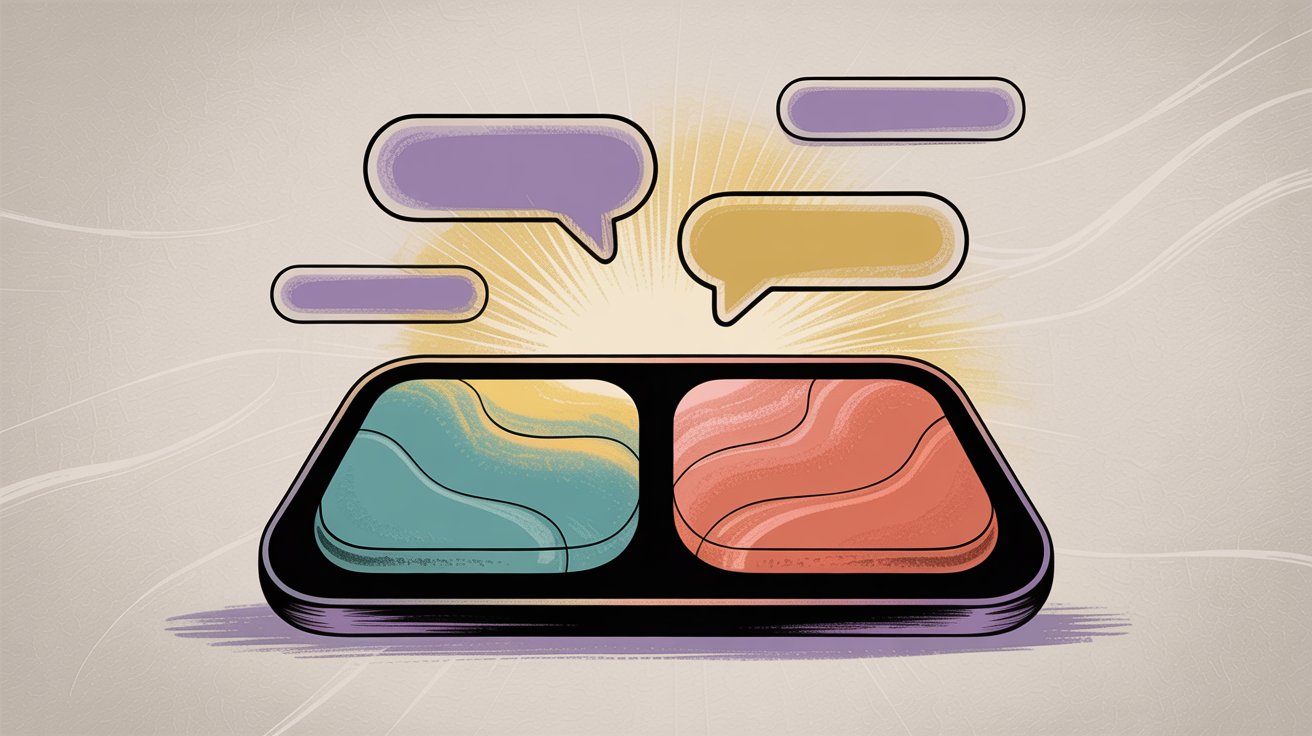
6. How to Install Live Chat on Your Client's Website
Next, deploy the chat widget on the client's site. Most solutions provide a snippet of JavaScript code to paste into the website's HTML (often just before the tag).
If the client uses a CMS or e-commerce platform, there might be a plugin or app available. For instance, Social Intents has apps for Shopify, Wix, WordPress, etc. to simplify installation. You can also easily add live chat to Squarespace, Weebly, and Webflow sites.
Work with the client's web developer or use the CMS yourself to get the chat script installed. Once added, the chat bubble should appear on the site.
7. How to Onboard Your Client's Team or Support Staff
Now decide who will actually answer the chats:
If the client's own team will handle chats:
You'll need to train them on using the system. This might be as simple as showing them how to respond via email or Slack if integrated, or giving a quick tour of the web dashboard interface.
Emphasize any key features like transferring chats, using canned responses, or viewing conversation history. Run a test chat on the site and let them practice responding.
If your agency (or a third-party service) will handle chats:
Then train your team or coordinate with the outsourced agents. Make sure scripts or knowledge bases are in place so agents can represent the client accurately.
8. How to Set Up AI Chatbot Automation (Optional)
If you plan to augment with a chatbot (and the platform supports it), set that up as well. Many platforms allow you to create an FAQ bot or enable an AI assistant with a toggle.
You might feed it the client's FAQ page URL or upload documents for training. Configure when the bot should be active (e.g., it might greet visitors first and handle easy questions, escalating to human agents for complex ones).
Test the chatbot thoroughly with sample questions to ensure it's helping, not confusing, visitors.
9. How to Test Your White-Label Chat Setup
Before "go live," do a comprehensive test:
→ Initiate chats from the website (during online hours and offline hours)
→ Test on mobile and desktop
→ If using AI, ask the bot a few things
→ If using multi-channel, send a message through Facebook or WhatsApp to ensure it appears
→ Ensure notifications to agents are working
→ Check that chat transcripts or lead emails are delivered to the right places
Basically, simulate a user's journey and a support agent's response to iron out any kinks.
10. How to Launch and Monitor Your Live Chat Service
Once everything looks good, officially launch the service on the client's site. For the first few days/weeks, keep a close eye on it.
Monitor the chats that come in. Are they being answered in a timely fashion? Are the chat operators handling them well? Tweak settings if you notice issues (for example, if chats are coming in after hours and no one is there, consider adjusting the widget to offline mode during those hours or turning on the bot).
Also review the analytics after a week or two. This will show chat volumes, missed chats if any, and visitor engagement. Use these insights to have a check-in with your client: show them the number of conversations happening and any early wins (e.g., "we captured 15 Leads in the first week!").
11. How to Optimize Chat Performance Over Time
After the initial launch, continually optimize the chat experience. Add more canned responses for common questions to save time.
If the platform allows proactive chat triggers (pop-ups that invite the visitor to chat based on behavior), experiment with those. For instance, prompting a chat if a user lingers on the pricing page.
Proactive chats can significantly increase engagement, leading to more conversions (one report noted proactive chat messages can result in a 105% ROI on chat investments).
Also, if the client has multiple departments or websites, consider expanding chat to those as well under the same account.
12. How to Scale Your White-Label Offering to More Clients
With one client successfully using your white-label chat, you can now market this service to more clients.
Use the results from the first deployment as a case study. For example, if that client saw a 20% increase in online leads thanks to chat, that's a powerful statistic to share.
Update your agency's website and sales materials to prominently include live chat/chatbot services. Your agency can even consider bundling chat with other services (e.g., a "Website + Live Chat package" for new site builds).
By following these steps, you'll integrate the white-label live chat smoothly into your agency operations. When done right, live chat becomes an indispensable asset for your clients, and a signature offering for your agency.
Tips for White-Label Chat Success
To wrap up, here are some best practices and tips to help your agency truly excel with white-label live chat:
How to Set Clear Goals With Clients
Before launching chat on a client's site, clarify what success looks like. Is the goal to generate leads? To reduce phone calls? To boost e-commerce sales through real-time support?
Defining this helps tailor the setup. For example, if lead gen is the goal, you might design the pre-chat survey to ask qualification questions and ensure every chat captures contact info.
Setting KPIs (like "we aim to capture at least 50 leads per month via chat") also gives you and the client a way to measure impact.
How to Train Chat Agents Effectively
A live chat tool is only as good as the people using it. If your client's team will be responding, offer them a short training session or guide.
Cover things like:
• Tone of voice (friendly and helpful)
• Using the customer's name
• How to handle multiple chats at once
• When to escalate to a phone call or higher support
Quick, personalized service is what makes live chat beloved by users (it consistently has the highest satisfaction rating among support channels). Avoid overly canned, robotic interactions.
How to Use Canned Responses and Knowledge Bases
Most chat platforms let you create pre-written responses for common questions ("What are your hours?", "How do I reset my password?", etc.).
Work with your client to populate a library of these. Agents can then answer FAQs with one click, maintaining consistency and speed. Keep these responses up to date as policies or info changes.
Similarly, if the platform has a knowledge base or FAQ integration, use it. Some AI bots will draw from the knowledge base to answer customer queries. Keeping a well-maintained FAQ will improve both bot and human performance.
How to Set Up Office Hours and Routing
If a client only has staff to cover chat during certain hours, configure the schedule in the software so that outside those times, the widget either hides or switches to offline mode (offering to send a message/email).
Nothing frustrates users more than an unanswered chat. It's better to collect an email than to appear available and not respond.
Also, if the client has multiple departments or skill groups, set up routing rules (e.g., sales chats go to the sales team, support chats go to support team). This ensures chats get to the right people and increases first-contact resolution.
How to Report Chat Performance to Clients
As the agency, part of your service should be regular reporting on chat performance. Use the analytics to your advantage.
For instance, if chat contributed to $X in sales or handled Y number of support queries with an average satisfaction of 90+%, highlight that. Many agencies provide monthly or quarterly reports. Include a section for live chat impact.
Not only does this justify the service fee, but it opens discussions for further optimization (maybe adding more coverage during peak hours, or deploying a chatbot to lighten the load, etc.).

How to Optimize User Experience on the Website
It's easy to get caught up in features, but always consider the end-customer's experience on the website. The chat widget should be welcoming, not annoying.
Use proactive chat invites sparingly and smartly (trigger on meaningful behaviors like time on page or exit intent, rather than popping up immediately and scaring people off). Ensure mobile optimization. Test the widget on a phone to see that it's easy to use.
If using chatbots, make sure it's clear they can reach a human if needed (for example, the bot might offer "Type 'agent' to chat with a human"). A smooth UX leads to higher engagement, which leads to better results for your clients.
How to Stay Current With New Features
As a reseller, keep in contact with your chat software vendor about updates. They will likely add features over time, whether it's new integrations, better AI, or improved UI elements.
Each new capability is something you can potentially roll out to clients or use to win new business. By staying at the forefront of what the technology can do, your agency remains the expert that clients rely on for the latest in customer engagement trends.
How to Define Roles and Responsibilities
When reselling a service, make sure you and your client know who's responsible for what. Are they expected to have someone on chat at all times during business hours? Or is your agency covering certain times?
If a chat is missed, how will it be handled? Setting these expectations in writing can prevent misunderstandings. Some agencies include SLA (service level agreement) targets in their contract, like "95% Of chats during business hours will be answered within 60 seconds."
How to Plan for Growth and Scaling
As your chat service grows, plan for scaling. If you sign on many clients, can you still provide the same level of support and attention to each?
Leverage the vendor's partner support for technical issues so you can focus on client-facing concerns. Also be mindful of cost scaling. Know at what client count or usage level you might need to upgrade your own license. It's better to anticipate than to be caught off guard by hitting a limit.
By following these best practices, you'll not only implement white-label live chat effectively but also create a truly premium service offering that clients appreciate and competitors have a hard time matching.
Remember, you're not just selling software. You're selling improved customer connections. The technology is the vehicle, but your agency's strategy and support will drive the success of each deployment.
Why Social Intents Is the Top Choice for Agencies
Throughout this guide, we've explored multiple white-label chat solutions. But if you're looking for a platform that combines ease of use, powerful features, and agency-friendly pricing, Social Intents stands out.
Here's what makes Social Intents the perfect partner for agencies:
Answer Chats From Tools Your Clients Already Use
Unlike other platforms that force clients to learn yet another interface, Social Intents integrates directly with Microsoft Teams, Slack, Google Chat, Zoom, and Webex. Your clients' teams can answer chats right from their existing collaboration tools. This means faster adoption, less training, and happier clients.
You can easily embed Teams or embed Slack on client websites, or set up Google Chat for customer support.
AI Chatbots Ready Out of the Box
Social Intents offers one-click AI chatbot training using ChatGPT, Claude, or Google Gemini. You can train bots on client websites, documents, and FAQs in minutes. The bots handle common questions 24/7, and seamlessly hand off to human agents when needed.
This is a huge selling point for clients who want to scale their support without hiring additional staff. You can even create custom AI actions to integrate with third-party tools for enriched conversations.
Complete White-Label Capabilities
With Social Intents' Agency Plan, you get:
• Complete branding control (your logo, your domain)
• A centralized dashboard to manage all client accounts
• 10 chatbots and 10 client accounts included in the base plan
• The ability to scale affordably as your agency grows
• No "Powered by" branding on any client-facing elements
Predictable Pricing That Protects Your Margins
Social Intents offers unlimited agents on most plans, which means you can resell to clients with large teams without worrying about per-seat fees eating into your margins.
The Agency Plan provides flat-rate pricing with transparent costs for additional clients, making it easy to calculate your profit margins.
Everything Clients Need in One Platform
You get everything your clients need in one platform:
→ AI chatbots with custom training
→ Multi-channel support (WhatsApp, SMS, Facebook Messenger)
→ Real-time translation
→ Analytics and reporting
→ CRM integrations via Zapier
Industry-Specific Solutions Available
Social Intents also offers tailored solutions for specific industries. For example, higher education institutions can benefit from specialized live chat features designed for student support and enrollment.
Ready to Launch Your White-Label Chat Service?
If you're serious about adding white-label live chat to your agency's offerings, Social Intents makes it incredibly easy to get started.
Start your free trial of Social Intents' Agency Plan today and see how quickly you can launch a profitable new service line for your agency. You can also request a demo to see the platform in action.
Frequently Asked Questions
What Exactly Is White-Label Live Chat?
White-label live chat is a fully developed chat platform that you can rebrand as your own. The technology is provided by a third party, but your clients and their website visitors only see your agency's branding. You essentially resell a proven chat solution under your own brand without building anything from scratch.
How Much Does White-Label Live Chat Cost for Agencies?
Costs vary by provider, but most agency plans range from $99 To $300+ per month. Social Intents' Agency Plan, for example, includes 10 client accounts and 10 chatbots in a flat-rate package, with transparent pricing for additional clients. The key is finding a pricing model that allows you to maintain healthy margins when reselling to clients.
Do I Need Technical Skills to Set Up White-Label Live Chat?
Not at all. Most white-label chat platforms are designed for non-technical users. You'll typically install a small snippet of code on your client's website (similar to installing Google Analytics), customize the widget colors and messaging, and configure basic settings. Many platforms offer apps or plugins for popular CMS platforms like WordPress, Shopify, and Wix that make installation even easier.
Can I Use My Own Domain for the Client Portal?
Yes, most reputable white-label chat providers allow you to set up a custom domain for your client login portal. For example, you could have clients log in at support.youragency.com or chat.youragency.com. Social Intents supports custom domain configuration, which reinforces your brand and makes the service feel truly yours.
How Do AI Chatbots Work With White-Label Live Chat?
Modern white-label chat platforms include AI chatbots that you can train on your client's specific content. You typically feed the bot your client's FAQ pages, knowledge base articles, or other documents. The AI then answers common questions automatically, working 24/7. When the bot encounters a question it can't handle, it seamlessly hands off to a human agent. Social Intents offers one-click chatbot training using ChatGPT, Claude, or Google Gemini.
Can Clients Answer Chats From Slack or Teams?
This is actually a major advantage of some white-label platforms. Social Intents specifically integrates with Microsoft Teams, Slack, Google Chat, Zoom, and Webex, allowing your clients' teams to answer website chats directly from these collaboration tools without logging into a separate interface. This dramatically improves adoption rates since staff can use tools they're already familiar with.
How Many Clients Can I Manage With One White-Label Account?
This depends on the provider and plan. Social Intents' Agency Plan includes 10 client accounts in the base package, with the option to add more as your agency grows. Some other providers charge per client account, while others offer tiered plans with different client limits. Make sure to choose a solution that scales affordably as your agency expands.
Will My Clients Know I'm Reselling Another Company's Software?
Not if you choose a true white-label solution. Everything from the chat widget to the login portal to email notifications will carry your branding. Your clients will see it as your service. Reputable white-label providers also agree not to contact or solicit your clients directly, ensuring they remain your clients, not theirs.
Can I Customize the Chat Widget for Each Client?
Absolutely. Most white-label chat platforms allow extensive customization per client. You can adjust colors to match each client's website, upload their logo, set custom welcome messages, configure business hours, and even customize the chat button style. The goal is to make the chat feel native to each client's brand and website.
What Kind of Reporting Do White-Label Platforms Provide?
Most white-label chat platforms provide comprehensive analytics including number of chats, response times, customer satisfaction ratings, busiest hours, lead capture data, and conversion metrics. As an agency, you can use these reports to demonstrate ROI to your clients and justify your fees. Many platforms also allow you to export data or schedule automated reports.
How Should I Price White-Label Live Chat for My Clients?
This depends on your costs and the value you're providing. Many agencies charge $99–$300+ Per month per client for managed chat services, depending on features, chat volume, and whether you're providing the chat operators. If clients manage their own chats, you might charge less. If you're providing 24/7 managed chat with human agents, you can charge significantly more. The key is ensuring your margins are healthy while providing clear value to clients.
What If the White-Label Provider Goes Out of Business?
This is an important consideration. Choose established providers with a track record of reliability. Look for companies that have been in business for several years, have transparent leadership, and show regular product updates. It's also wise to have a migration plan in your client contracts, though in practice, most reputable white-label chat providers are stable businesses. Social Intents has been operating since 2017 with thousands of customers.
Conclusion: Seize the White-Label Chat Opportunity
Live chat has become an essential part of the customer experience in 2025, and Agencies are uniquely positioned to deliver this value to businesses through white-label solutions.
Instead of reinventing the wheel, you can partner with a proven platform, brand it as your own, and instantly add a high-demand service to your portfolio.
The benefits are clear:
• Happier clients (who get more leads and better customer satisfaction)
• A new stream of recurring revenue for you
• Deeper, stickier relationships all around
To recap, when exploring white-label live chat for agencies:
Educate yourself and clients on why live chat matters. Cite those compelling stats about customer preference and conversion lifts.
Choose a platform that aligns with your needs (be it a lean chat widget or a full-featured omnichannel system, a DIY software or a done-for-you service).
Leverage the white-label features to put your agency's stamp on the product. It will reinforce your brand value.
Execute with excellence, from configuring the chat to training responders and analyzing the outcomes.
Continuously optimize and expand. Ensure the chat service evolves with technology (AI, new channels) and with your clients' evolving goals.
Agencies who adopt white-label chat often find it becomes one of their most impactful offerings. You're not just delivering a tool, you're delivering results: more engagement, more conversions, more insights. And because you handle the heavy lifting, clients will gladly pay for the convenience and expertise.
In the dynamic digital landscape, agencies must constantly prove their worth. White-label live chat is a tangible, results-driven service that can set you apart. It addresses an immediate business need with clear ROI.
So, whether you're a small consultancy or a larger agency network, consider adding live chat (and AI chatbots) to your suite of solutions. The year is 2025, and real-time customer communication is more important than ever. Help your clients embrace it under your trusted brand.
They'll thank you with loyalty and referrals, and you'll strengthen your position in an increasingly competitive agency market.
Now is the time to act: Start your Social Intents Agency Plan trial, launch a pilot with a willing client, and iterate from there. In a few months, you could have an array of client sites all chatting away under your branded chat system, generating leads and delighting customers, all thanks to your agency.
That's a win worth striving for.
